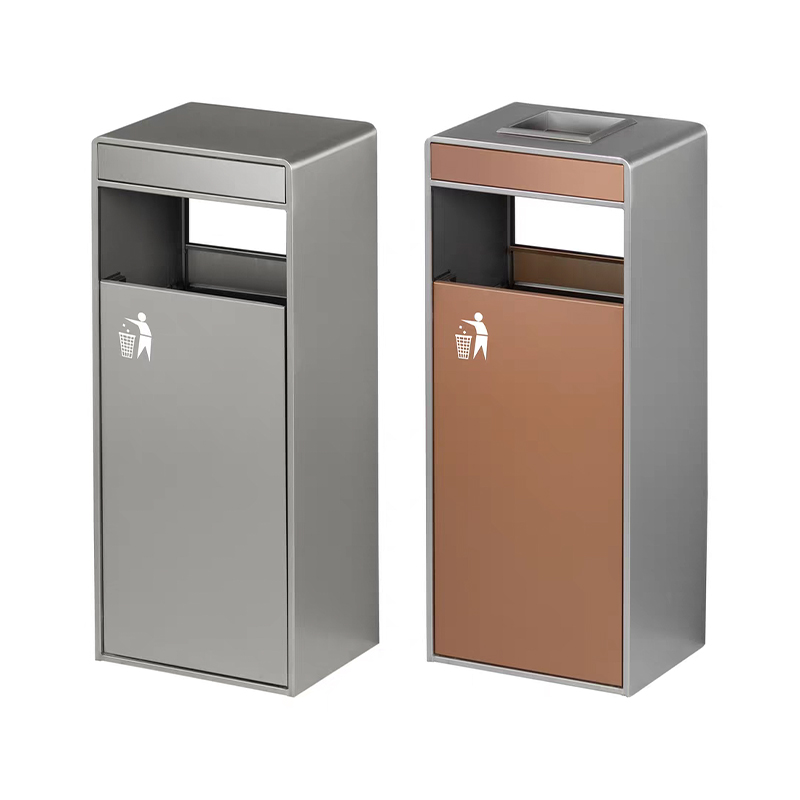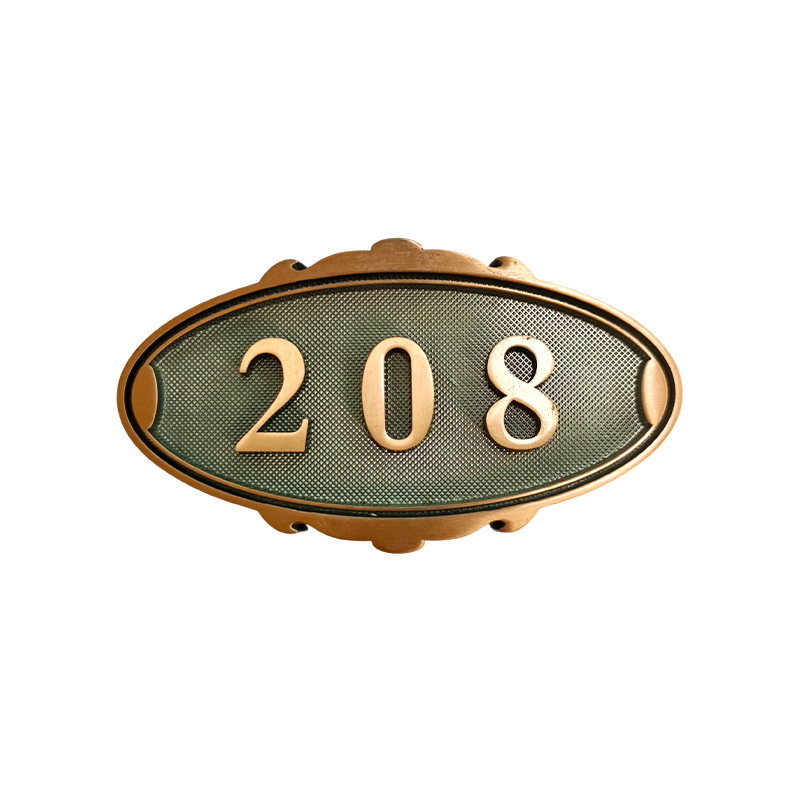Are garbage can signs and labels made of weather-resistant materials?
Release Time : 2025-10-23
In the daily management of urban public spaces, garbage cans are not only essential for environmental sanitation but also serve as a guide for civilized behavior. With the widespread adoption of waste sorting, signs and labels have become an indispensable component of garbage cans, fulfilling the important functions of sorting guidance, disseminating information, and promoting environmental education. However, these signs are prone to fading, blurring, bubbling, cracking, and even peeling due to prolonged exposure to outdoor environments, strong sunlight, frequent rain, fluctuating day and night temperatures, and human friction. Once these signs become ineffective, the sorting guidance becomes ineffective, making it difficult for residents to dispose of their waste accurately, and the effectiveness of waste sorting is significantly compromised. Therefore, whether garbage can signs and labels are made of weather-resistant materials that resist fading and cracking despite long-term exposure to the sun and rain is directly related to the practicality of public facilities and the quality of urban management.
High-quality garbage can signage has long since moved beyond simple stickers or paint, employing specialized materials and craftsmanship with excellent weather resistance. These signs are typically constructed from UV-resistant engineering plastics, aluminum alloy substrates, or polymer composites. Specially treated to withstand extreme weathering, these materials effectively resist degradation, ensuring vibrant colors and legible graphics. Even after years of outdoor use, the signs remain pristine, unaffected by weathering or warping and peeling due to thermal expansion and contraction.
Advanced signage utilizes techniques such as screen printing, UV curing, laser etching, or lamination to embed the design and text deep into the surface, rather than simply attaching them to the surface. This process not only enhances visual quality but also increases scratch and graffiti resistance. Even in busy streets, parks, or stations, frequent handling and friction will not easily damage the sign's integrity. Some high-end products also feature a transparent anti-scratch shield or anti-glare coating to protect the graphics while reducing reflections and enhancing readability in varying lighting conditions.
From a functional perspective, weather-resistant signage not only carries information but also serves as a silent steward of urban civilization. When residents drop off their trash early in the morning or at dusk, they can still clearly identify which garbage category corresponds to which color-coded drop-off slot. When children learn about waste sorting under their parents' guidance, vibrant images and clear text become the most intuitive teaching tools. This consistent and stable visual guidance subtly cultivates public environmental awareness and fosters the habit of sorting. Conversely, signs made of inferior materials that quickly deteriorate not only affect the city's appearance but also undermine public trust in and willingness to cooperate with the waste sorting system.
Furthermore, a unified and durable signage system helps enhance the city's overall image and professionalism. In commercial districts, tourist attractions, and newly built communities, consistently styled, reliable garbage cans and signage create a coherent visual language, showcasing refined and humane urban management. They are no longer isolated features but part of the urban landscape, conveying a sense of cleanliness, order, and sustainable development.
Furthermore, the long-term stability of weather-resistant signage reduces maintenance costs. Traditional sticker signs often require periodic replacement, consuming both labor and resources. High-quality, durable signs, on the other hand, can be maintenance-free for years, reducing operational pressure on sanitation departments. Even after extreme weather events like typhoons and heavy rains, the signs remain intact, allowing for rapid restoration of service.
In summary, signage constructed from weather-resistant materials is a crucial detail in ensuring the long-term operation of the waste sorting system. Silently yet firmly, they safeguard the accuracy and authority of sorting instructions, ensuring that environmental protection remains clearly visible despite the elements. In today's pursuit of sustainable development, such signs that resist fading and cracking are not only a technological choice but also a commitment to the enduring vibrancy of urban civilization.
High-quality garbage can signage has long since moved beyond simple stickers or paint, employing specialized materials and craftsmanship with excellent weather resistance. These signs are typically constructed from UV-resistant engineering plastics, aluminum alloy substrates, or polymer composites. Specially treated to withstand extreme weathering, these materials effectively resist degradation, ensuring vibrant colors and legible graphics. Even after years of outdoor use, the signs remain pristine, unaffected by weathering or warping and peeling due to thermal expansion and contraction.
Advanced signage utilizes techniques such as screen printing, UV curing, laser etching, or lamination to embed the design and text deep into the surface, rather than simply attaching them to the surface. This process not only enhances visual quality but also increases scratch and graffiti resistance. Even in busy streets, parks, or stations, frequent handling and friction will not easily damage the sign's integrity. Some high-end products also feature a transparent anti-scratch shield or anti-glare coating to protect the graphics while reducing reflections and enhancing readability in varying lighting conditions.
From a functional perspective, weather-resistant signage not only carries information but also serves as a silent steward of urban civilization. When residents drop off their trash early in the morning or at dusk, they can still clearly identify which garbage category corresponds to which color-coded drop-off slot. When children learn about waste sorting under their parents' guidance, vibrant images and clear text become the most intuitive teaching tools. This consistent and stable visual guidance subtly cultivates public environmental awareness and fosters the habit of sorting. Conversely, signs made of inferior materials that quickly deteriorate not only affect the city's appearance but also undermine public trust in and willingness to cooperate with the waste sorting system.
Furthermore, a unified and durable signage system helps enhance the city's overall image and professionalism. In commercial districts, tourist attractions, and newly built communities, consistently styled, reliable garbage cans and signage create a coherent visual language, showcasing refined and humane urban management. They are no longer isolated features but part of the urban landscape, conveying a sense of cleanliness, order, and sustainable development.
Furthermore, the long-term stability of weather-resistant signage reduces maintenance costs. Traditional sticker signs often require periodic replacement, consuming both labor and resources. High-quality, durable signs, on the other hand, can be maintenance-free for years, reducing operational pressure on sanitation departments. Even after extreme weather events like typhoons and heavy rains, the signs remain intact, allowing for rapid restoration of service.
In summary, signage constructed from weather-resistant materials is a crucial detail in ensuring the long-term operation of the waste sorting system. Silently yet firmly, they safeguard the accuracy and authority of sorting instructions, ensuring that environmental protection remains clearly visible despite the elements. In today's pursuit of sustainable development, such signs that resist fading and cracking are not only a technological choice but also a commitment to the enduring vibrancy of urban civilization.







